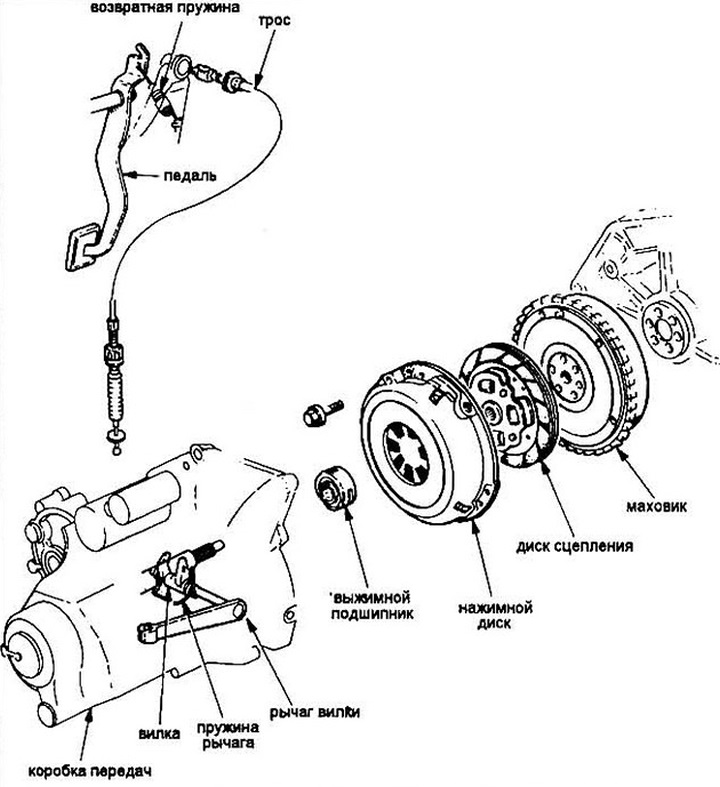
Pic. 2.1 Clutch assembly (typical circuit)
2. The clutch is controlled mechanically. The clutch engagement system consists of a pedal, a cable, a fork lever and a release bearing.
3. When you press the clutch pedal, the cable turns the fork lever, which moves the release bearing with its fingers.
The bearing presses on the diaphragm blades, relieving the force of pressing the disc against the flywheel - the clutch is disengaged.
4. Below we give the initial stage of diagnosing the condition of the clutch.
- A) control "slowdown" clutch: engine idling, gear lever in neutral position, clutch engaged. Depress the clutch pedal, wait a few seconds and engage reverse gear. If grinding occurs, there is a problem with the pressure plate or clutch disc.
- b) control of the complete disengagement of the clutch. Put the car on the parking brake. Start the engine. Hold the clutch pedal about 13 mm from the floor. Engage first and reverse gears alternately. If shifting is difficult and there is a grinding sound, there is a malfunction in the clutch.
- V) inspect the clutch pedal bushing. Check for kinks or excessive wear.
- G) Difficulties in operating the clutch pedal are mainly due to damage to the cable. Check for cable mechanical behavior, corrosion, dirt, etc. If no damage is found, lubricate the cable with oil. A worn cable must be replaced.
